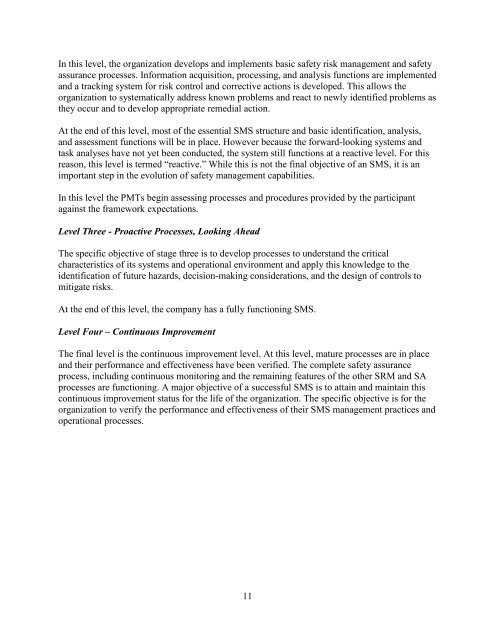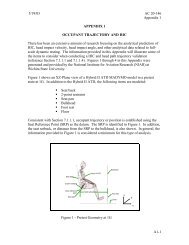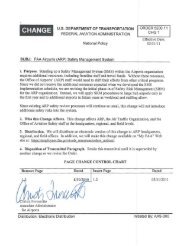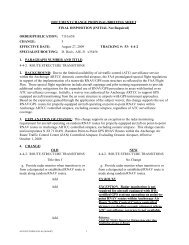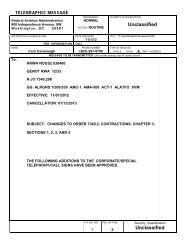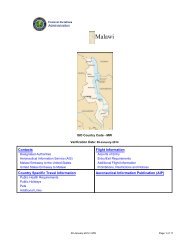2009 SMS Pilot Project (SMSPP) Analysis - FAA
2009 SMS Pilot Project (SMSPP) Analysis - FAA
2009 SMS Pilot Project (SMSPP) Analysis - FAA
Create successful ePaper yourself
Turn your PDF publications into a flip-book with our unique Google optimized e-Paper software.
In this level, the organization develops and implements basic safety risk management and safety<br />
assurance processes. Information acquisition, processing, and analysis functions are implemented<br />
and a tracking system for risk control and corrective actions is developed. This allows the<br />
organization to systematically address known problems and react to newly identified problems as<br />
they occur and to develop appropriate remedial action.<br />
At the end of this level, most of the essential <strong>SMS</strong> structure and basic identification, analysis,<br />
and assessment functions will be in place. However because the forward-looking systems and<br />
task analyses have not yet been conducted, the system still functions at a reactive level. For this<br />
reason, this level is termed “reactive.” While this is not the final objective of an <strong>SMS</strong>, it is an<br />
important step in the evolution of safety management capabilities.<br />
In this level the PMTs begin assessing processes and procedures provided by the participant<br />
against the framework expectations.<br />
Level Three - Proactive Processes, Looking Ahead<br />
The specific objective of stage three is to develop processes to understand the critical<br />
characteristics of its systems and operational environment and apply this knowledge to the<br />
identification of future hazards, decision-making considerations, and the design of controls to<br />
mitigate risks.<br />
At the end of this level, the company has a fully functioning <strong>SMS</strong>.<br />
Level Four – Continuous Improvement<br />
The final level is the continuous improvement level. At this level, mature processes are in place<br />
and their performance and effectiveness have been verified. The complete safety assurance<br />
process, including continuous monitoring and the remaining features of the other SRM and SA<br />
processes are functioning. A major objective of a successful <strong>SMS</strong> is to attain and maintain this<br />
continuous improvement status for the life of the organization. The specific objective is for the<br />
organization to verify the performance and effectiveness of their <strong>SMS</strong> management practices and<br />
operational processes.<br />
11


